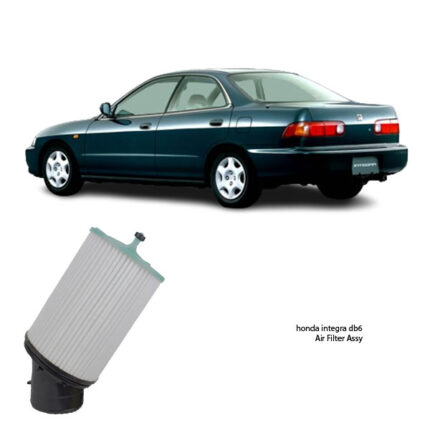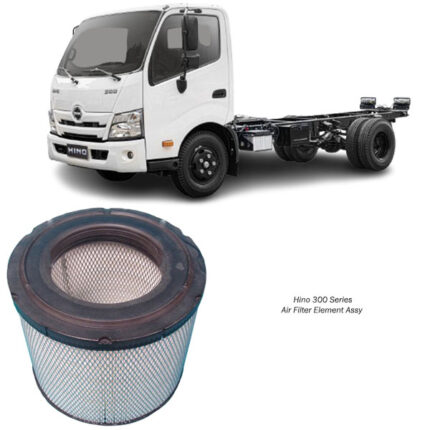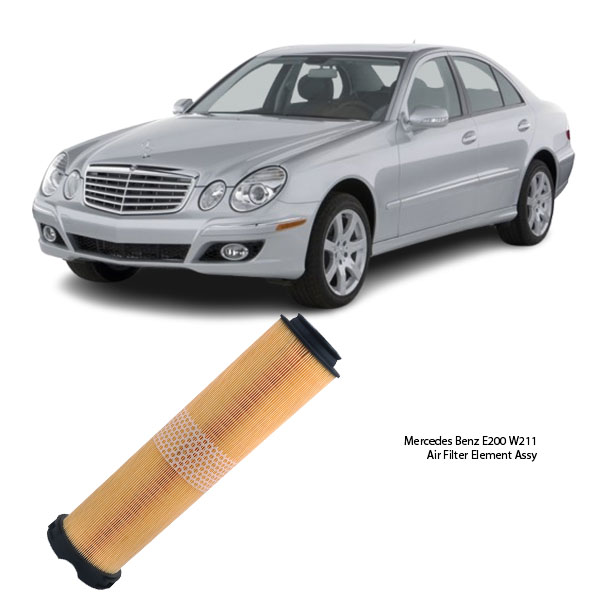Get Mercedes Benz E200 W211 Air Filter Element Assy A0114 in Kenya
The Air Filter Element Assembly is a critical component in a vehicle’s intake system, ensuring that only clean air reaches the engine. It removes dust, dirt, debris, and contaminants from the air before it enters the combustion chamber. A clean air filter improves engine performance, fuel efficiency, and longevity by preventing abrasive particles from damaging internal components.
Over time, air filters become clogged with dirt and need to be replaced. Failure to maintain the air filter can lead to reduced power, poor fuel economy, and increased emissions. This guide provides an in-depth explanation of the function, benefits, types, symptoms of failure, maintenance tips, and replacement process of an air filter element assembly in 1,000 words.
1. What is an Air Filter Element Assembly?
An Air Filter Element Assembly is a component of a vehicle’s intake system designed to trap airborne contaminants before they reach the engine. It consists of a filtering element housed in a protective casing that allows air to pass through while capturing harmful particles.
Function of the Air Filter Element Assembly
- Filters Airborne Contaminants – Captures dust, dirt, pollen, and debris from the air before it reaches the engine.
- Ensures Optimal Airflow – Maintains a steady and clean airflow for proper combustion.
- Protects Engine Components – Prevents cylinder walls, piston rings, and valves from damage caused by contaminants.
- Enhances Fuel Efficiency – A clean air filter promotes efficient fuel combustion, reducing unnecessary fuel consumption.
- Reduces Emissions – Helps maintain the proper air-fuel ratio, minimizing unburnt fuel and exhaust pollutants.
2. Components of an Air Filter Element Assembly
A typical air filter assembly includes:
A. Filter Element
- The main filtering medium, made of paper, foam, cotton, or synthetic fibers.
- Traps dirt, dust, and other impurities.
B. Housing or Frame
- A plastic or metal casing that holds the filter securely in place.
- Ensures proper sealing to prevent unfiltered air from entering the engine.
C. Sealing Gasket
- A rubber or foam seal that prevents unfiltered air from bypassing the filter.
3. Types of Air Filter Elements
Air filter elements come in various types, each offering different levels of filtration and performance.
A. Paper Air Filters
✔ Most common in OEM (Original Equipment Manufacturer) vehicles.
✔ Made of pleated cellulose (paper) material.
✔ Affordable and provides good filtration efficiency.
✔ Needs frequent replacement.
B. Foam Air Filters
✔ Made of oil-coated polyurethane foam.
✔ Common in off-road vehicles and motorcycles.
✔ Captures larger dust particles effectively.
✔ Can be washed and reused.
C. Cotton Air Filters (High-Performance)
✔ Used in performance vehicles.
✔ Made of multiple layers of oiled cotton gauze.
✔ Allows for higher airflow and better engine response.
✔ Reusable after cleaning and re-oiling.
D. Synthetic Air Filters
✔ Made from non-woven synthetic fibers.
✔ More durable than paper filters.
✔ Better filtration efficiency.
4. Benefits of a Clean Air Filter Element
Keeping the air filter in good condition provides numerous benefits for engine performance and efficiency:
✔ Improved Fuel Economy – Clean air allows for better combustion, reducing fuel consumption.
✔ Enhanced Engine Performance – A steady supply of clean air ensures smoother acceleration and power output.
✔ Longer Engine Life – Protects internal engine components from premature wear and tear.
✔ Reduced Emissions – Helps maintain the correct air-to-fuel ratio, lowering exhaust pollution.
✔ Better Throttle Response – A clogged filter can restrict airflow, affecting throttle performance.
5. Signs of a Dirty or Failing Air Filter Element
Over time, air filters accumulate dirt and debris, leading to reduced performance. Here are some signs that indicate the need for a replacement:
A. Reduced Acceleration and Power
- A clogged filter restricts airflow, leading to sluggish acceleration.
B. Increased Fuel Consumption
- A dirty air filter disrupts the air-fuel mixture, causing the engine to burn more fuel.
C. Black Smoke from the Exhaust
- Insufficient air supply leads to incomplete combustion, producing black smoke.
D. Unusual Engine Sounds
- Hissing or coughing sounds may indicate restricted airflow.
E. Visible Dirt and Debris
- A gray or black filter is a clear sign of contamination.
F. Check Engine Light (CEL) Activation
- Sensors may detect restricted airflow, triggering a warning light.
6. Maintenance Tips for an Air Filter Element Assembly
Proper care can extend the life of an air filter and improve engine performance.
✔ Inspect Regularly – Check the air filter every 10,000 – 15,000 km or as per the manufacturer’s recommendation.
✔ Replace When Necessary – Most air filters should be replaced every 20,000 – 30,000 km, depending on driving conditions.
✔ Check for Leaks – Ensure the filter housing and sealing gasket are intact.
✔ Clean Reusable Filters – If you have a foam or cotton filter, clean and re-oil it regularly.
✔ Avoid Driving in Dusty Areas – If driving in off-road or dusty environments, change the filter more frequently.
7. How to Replace an Air Filter Element
Replacing an air filter is a simple and quick process that can be done in a few minutes.
Tools Required:
🔧 Screwdriver (if needed for housing)
🛢️ New Air Filter Element
Step-by-Step Replacement Process:
Step 1: Locate the Air Filter Housing
- Usually found inside a plastic airbox near the engine intake manifold.
Step 2: Open the Air Filter Housing
- Remove clips or screws securing the housing.
Step 3: Remove the Old Air Filter
- Take out the dirty air filter and inspect for excessive dirt.
Step 4: Clean the Housing (If Needed)
- Wipe away any dust or debris inside the housing.
Step 5: Install the New Air Filter
- Ensure the new filter fits snugly with the sealing gasket properly seated.
Step 6: Reassemble the Air Filter Housing
- Secure the cover with clips or screws.
Step 7: Start the Engine and Test
- Ensure the engine runs smoothly without unusual sounds.
💡 Pro Tip: Always use OEM or high-quality aftermarket air filters to ensure proper fitment and performance.
Conclusion
The Air Filter Element Assembly is a vital part of a vehicle’s intake system, ensuring clean air reaches the engine. It plays a crucial role in engine efficiency, fuel economy, and longevity by preventing contaminants from entering the combustion chamber.
Regular inspection and timely replacement of the air filter can significantly enhance engine performance, fuel efficiency, and emission control.
If you notice reduced acceleration, increased fuel consumption, or excessive dirt buildup, replacing the air filter is a quick and cost-effective solution to restore optimal performance. 🚗💨
Follow us on Facebook for more parts.




